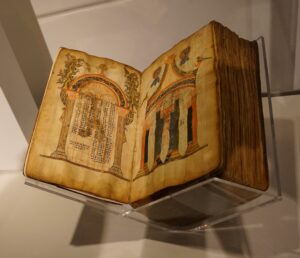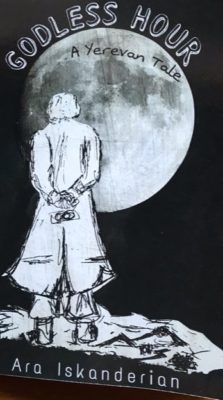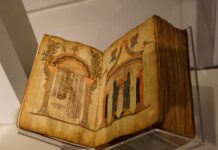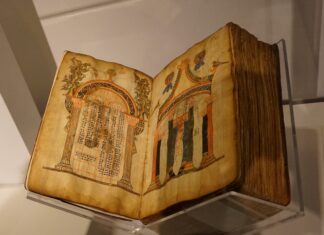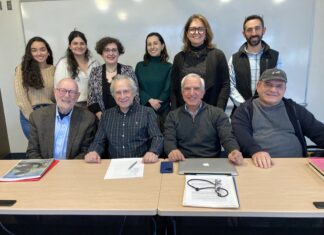The world of Ara Iskanderian’s first published novella, Godless Hour — A Yerevan Tale (Gomidas Institute, 2021) is a fantasy world. In the author’s own words, it is a world in which “the magical, the mythical, and the unreal . . . still reside.” On the “blackest of nights,” when God looks the other way for a single hour, the Reckless demon Ajami brings to life the stone statues in the Rose City of Yerevan and, to entertain himself, engages them in a contest to decide “Who is the greatest?”
Godless Hour is a narrative offered through the dialogues of a “cast of characters.” The book does in fact have a Dramatic Personae and the story has the immediacy of a theatrical experience. In response to Ajami’s “playful questions,” each revived statue gives an account of its part in Armenian history and culture. Iskanderian lures us with the great names we all grew up with. The debates between Mesrop Mashtots and Tigran the Great, and between the other major players of our nation’s past, engage us fully. The book’s 122 pages build to a crescendo of excitement and intensity.
Godless Hour is “a story of total fiction,” writes Iskanderian in his preface. Yet, it is fiction that is not detached from our own reality. The novella is full of the facts of our history. Haik Nahapet, Mesrop Mashdotz, Sayat Nova, Aram Khachaturian and the remaining of the 20 statues of the Rose City perform at the bidding of master Ajami. Their discourses create a credible world. The contemporary resonance of The High Father’s, “They squabble whilst around them the enemy gathers forth for their slaughter,” cannot be missed. Besides evoking our humiliating defeat in the recent Artsakh war, it highlights the urgency of our current situation.
Iskanderian is careful, however, not to reduce a very complex reality to a simplistic “solution.” As a “trained historian,” to borrow his words, he carefully lays out “the great dichotomy of the Armenian nation,” the tension between a dispersed diaspora and a center that has to hold this important people together. The ever-present fact of exile being a fertile soil for Armenians—the sarcastic, What need of land?—is brought together with the lure of a homeland where the “lost souls” can return and live in peace under the protective gaze of Mayr Hayastan. The book does hint at the possibility of a harmonious existence between the two, yet the questions remain: Will High Father and High Mother return to each other? How does one reconcile the reality of “two parents forever apart?“ Ironically, these unanswered questions make the desired connection more credible, as it embraces the facts, albeit the ambiguities, of the current state of our nation.
One wonders why Iskanderian characterizes his approach as “didactic.” Even if offered as a series of monologues by the individual statues, the diverse perspectives subvert the very one-sidedness of didacticism. Against the dissuasions of Vartanantz being “A children’s delight, but a meaningless fable,” for example, we have Vartan Mamikonian’s defiant, “death embraced is immortality.” Similarly, “True . . much was lost forever,” is juxtaposed with the ever-victorious “Vahagn — a god of war,” and with Sasuntsi Davit’s,
